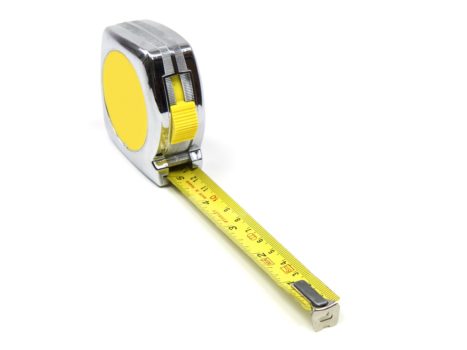VAST 4.0: The New Video Advertising Age
by Lindsay Rowntree on 3rd May 2016 in News

The trackability of video is a complex area. However, great strides are being made in reducing this complexity. ExchangeWire speak with Phillip Hayman (pictured below), UK head of sales engineering, Integral Ad Science, about the release of VAST 4.0 and how it is improving measurement of video advertising.
A question I’m frequently asked is why aren’t all online video ad impressions created equal? Why can some be tracked, while others can’t? The quick answer is that the ability to track video ad impressions, and user engagement, can depend on a number of factors including: Player environment, the tech delivering the video, how the video was implemented on the publisher’s site, and, possibly, even a niche custom publisher-side integration.
There’s no doubt we need a simpler system; and it might just have arrived.
In 2008, the IAB introduced VAST (Video Ad Serving Template), a global initiative to streamline the video advertising marketplace, a common language for the communication and transference of data between ad servers and video players. The earlier specifications of VAST, and its various updates since, have been widely adopted by the industry.
In November last year, the IAB invited the industry to review its newly released and improved specification, VAST 4.0. I can report, there are some compelling features with the new template, which could make for a simpler and brighter future for video ad tracking. There are four key features that I think will make measurement of video advertising much more effective:
1. Greater alignment of digital video and TV metrics
VAST 4.0 offers an important step forward for many broadcasters and content creators who have to adhere to strict ad approval policies. With the new introduction of a Universal Ad ID within VAST 4.0., each video ad is allocated a single ID for the creative across multiple systems, allowing the creative to be consistently tracked, regardless of device or platform. While this is not intended to be a replacement for the current unique identifier, it will provide publishers with the means to audit and control ad creative more accurately, which will help align digital video metrics closer to those already available in TV.

2. Enhanced verification and viewability measurement
VAST 4.0 features a designated space for verification codes, which will remove uncertainty around the deployment and measurement of non-VPAID environments, improving measurement coverage across compliant video players.
An interesting additional verification feature in VAST 4.0 is the Viewable Impression element, which gives publishers access to track viewable impressions across their inventory. This has the potential to be a great asset for publishers, as the script can be used to build optimisation logic; it can also be used to flag a user, or IP address, to include in a particular targeting segment. This could play a key role in the advanced analytics and reporting publishers will need to provide as they manage their viewable supply.
3. Simplified cross-screen delivery
The complexity of digital video has created the need to separate the video playing data from the recorded user interactivity data. VAST 4.0 introduces this separation of video file from interactivity and will make for a well-received update because it will mean delivering ads to multiple platforms cross-screen becomes a less problematic task. Video advertising will be more successfully delivered, and user engagement will be more easily reported.
Creative size has always been an issue in video advertising; and in today’s ad blocking era, with heightened sensitivity towards latency, the benefit of splitting out the video file elements would allow each to be optimised and the video file asset size should improve.
4. Streamlining ad and content delivery
The new VAST 4.0 specification has built on the widely used method of ad stitching, a technology that allows publishers to combine third-party video advertising playing to their owned video content. Stitching allows the publisher to join both video elements in one stream directly through their CMS tool. This stitching is supported by high-spec 'mezzanine files', which ensures consistent file quality and correct video creative delivery. This development also represents a key change in the technical relationship between buyer, seller, and verification partner, as all will be more integrated and transparent.
Another added benefit is that this streamlining will effectively help reduce the possibility of ad blocking; and a publisher’s control over ad blocking will also be better managed.
The new VAST 4.0 features clearly demonstrate that many industry voices have contributed, and all sides of the video advertising ecosystem are being catered for. We have seen that, too often, video budgets have been capped to take into account that not every video ad, or user engagement event, can be tracked. Any industry initiative that makes ads more trackable, leading to greater transparency, can only be a good thing.
From the perspective of a publisher, the new VAST 4.0 specs challenge the existing status quo, as it gives publishers the tools to better track and optimise campaigns; and, in turn, they are better able to apportion greater value to what they offer advertisers. VAST 4.0 should help streamline the workflow between advertiser, third-party verification tool, and publisher – ultimately providing an opportunity to improve the end-user experience and publisher yield.
From the perspective of the buyer, there is a need to cede off some of the control over the video ad delivery to the publisher; however, this will mean a larger pool of verifiable videos would be accessible and will lead to a more progressive dialogue between TV broadcasters and buyers, which has previously not been possible.
I don’t think the new VAST 4.0 will replace the widely used VPAID delivery format just yet, as it is still early days for the industry to pick up on this upgrade; and, in some cases, the VPAID API is still needed to bring data back from the ad impression into other platforms.
However, one thing is certain, the technical standards that the IAB, and its contributing members, are creating are providing the building blocks for a more connected video ad-serving ecosystem.








Follow ExchangeWire